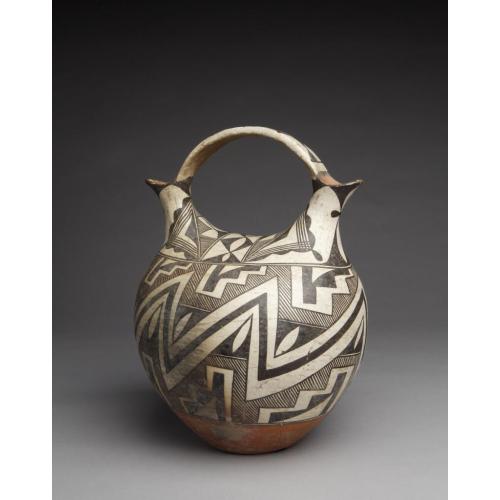
Photograph by Addison Doty. Copyright 2014 School for Advanced Research.
Wedding vase
Date: 1910-1920
Artist or Maker: Unknown
Dimensions:
Dimensions: 33 × 24.1 cm (13 × 9 1/2 in.)
Weight: 1.7 kg (3.75 lb.)
Medium: clay | paints
Credit Line: Gift of Kenneth M. Chapman, 1928.
Place Made:
Valencia County, New Mexico, Southwest, United States, North America
Object Number: IAF.958
Not on view
Tribal Collection Review RemarksAccording to the participants in the Acoma collection review visit February 17-19, 2016 (Events Record “Collection Review: Acoma Pueblo Review 5”): This vase is made very well and the participants are very impressed with the skill of the artist. The design on the top of the vase between the handles is well executed and the overall design and shape are well balanced.
According to the participants in the Acoma collection review visit February 26-27, 2019 (Events Record “Collection Review: Acoma Pueblo Review 12”): Vases likely came into production as a tourist trade item. The vase form may be an influence from other cultures. Vases are still being made and used today at Acoma in both traditional natural and commercial materials.
In Collection(s)
Bibliography:
The Indian Arts Research Center, in collaboration with Native American community scholars, strives to present accurate collections records. Records may be updated as new information becomes available and is reviewed with the Native American community having cultural affinity to particular items. Please write to iarc@sarsf.org if you have questions or concerns related to the documentation.
